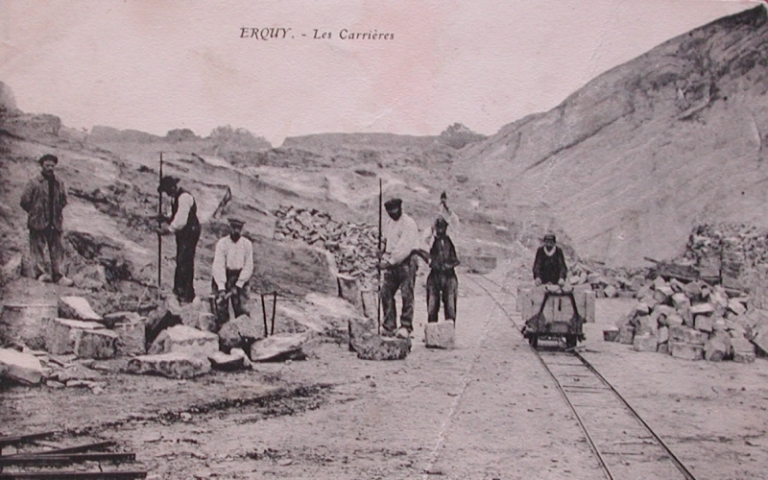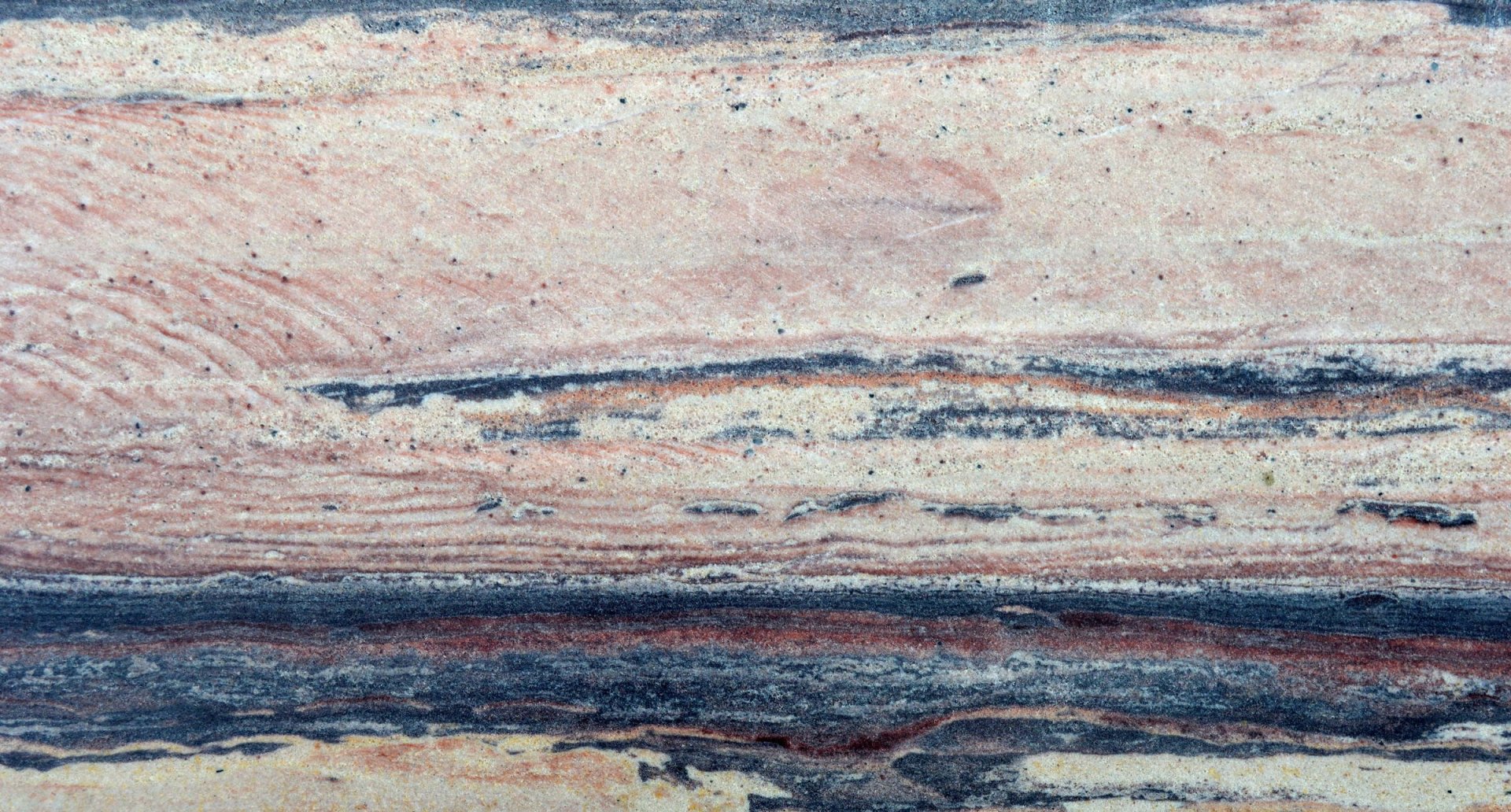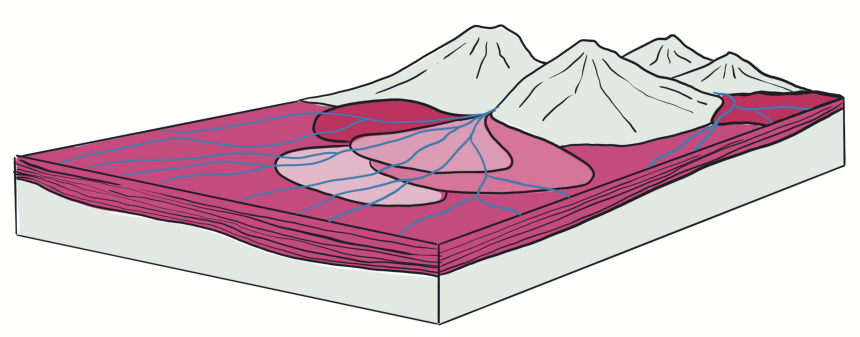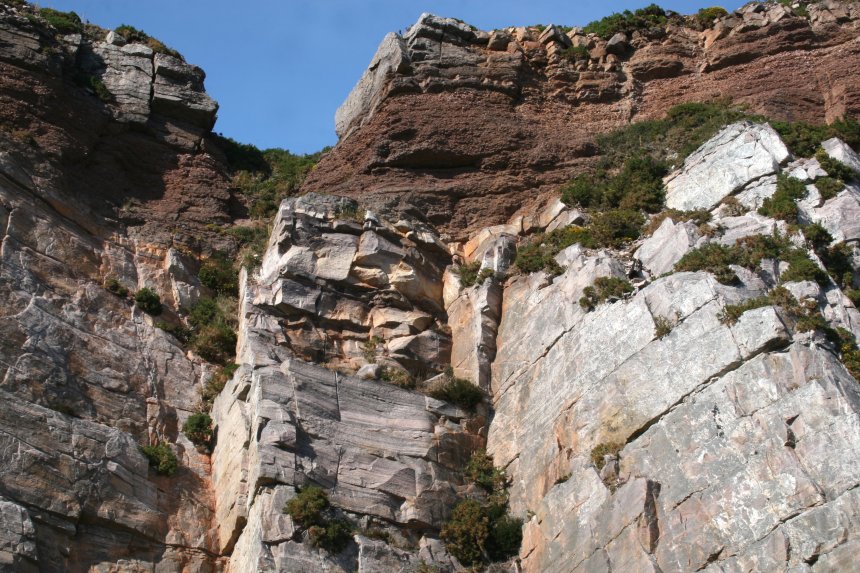Stone : red sandstone
Type : sedimentary rock
Age : 480 million years
Quarry : Lourtuais, Erquy (Côtes d’Armor)
Multicolored Sand
Sandstone is a sedimentary rock formed from ancient hardened sand grains. The polished surface of the rock layer reveals horizons of different colors. These indicate variations in the composition of the sands. The darker layers are very rich in heavy minerals, such as iron or manganese oxides. Some of the lighter layers show cross-bedding; these features, well known to geologists, indicate a more turbulent depositional environment. The sands, transported by rivers with variable flow rates, were deposited on a piedmont plain at the base of hills.
Millions of 10x10x10
The exploitation of the sandstones at Erquy began in the late 18th century and ended in the 1960s. The quarries mainly produced paving stones (10x10x10 cm) but also rubble stones, curb stones, and door and window lintels and frames. Quarry activity peaked between 1900 and 1930. Quarry waste was used in the construction of the Rance tidal power station dam in the early 1960s. All materials were exported by sea. Today, an interpretive trail allows visitors to discover the history of the quarry workers. The extraction site at Lourtuais is located 400 meters north of these former quarries.

Opening, Expanding, Closing, Redeveloping
Opening or expanding a quarry is not something done on a whim. The company must prepare an authorization request and submit it to the prefecture services. This study details how the quarry will be operated and proposes solutions to manage its environmental impacts (water, noise, dust, biodiversity, landscape, etc.). It also outlines the site’s rehabilitation plan after operations end. The company is required to restore the site. The maximum duration of operation is set at 30 years but is renewable.


